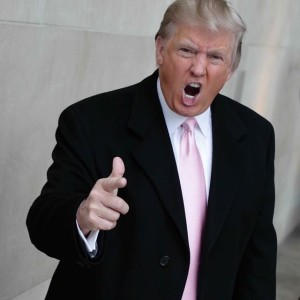Donald Trump has made headlines across the nation with his claims that illegal immigrants are a major cause of the nation’s economic plight and that, as President of the United States, he would crack down on unlawful border crossers and thereby “help make America great again.” But almost everything Trump says about immigration is at odds with the findings of social scientists who have studied it.
The polarizing popular debate surrounding cross-border migration has long been fraught with exaggerated claims and broad generalizations based on limited evidence. Social scientists, like the public, differ in their preferences about immigration policy, and they actively debate the impact of immigration on the United States. But there is also much consensus among them.
My new book, The Economics of Immigration, brings together leading social scientists to summarize the state of the scholarly debate about U.S. immigration, and to air their differences over immigration policy. Whatever their disagreements, their analyses show that almost none of the claims Trump has made about immigration have a scholarly leg to stand on.
According to Trump, “the influx of foreign workers holds down salaries and keeps unemployment high” for non-immigrants. In contrast, the scholars who study the economic impact of immigration find that newcomers have had zero impact on the employment and compensation of native-born workers overall.
People around the world take notice whenever immigrants work in jobs that native-born workers no longer hold. But they don’t see the jobs that are created because of immigration. Sometimes these jobs provide goods and services directly to the immigrants.
Sometimes new jobs come into existence because labor has been freed up from its previous employment, enabling people to earn a living by better serving each other’s needs. This happens whether the increase in the pool of workers comes from a baby boom, women entering the workforce, or immigration. The size of the labor force has more than doubled since the 1950s, and so have the number of jobs.
When it comes to wages, reasonable economists disagree about immigrants’ impact, but they do not find any general decline in wages caused by immigration. Instead, they debate whether immigration causes the wages of high school dropouts to fall by as much as 7 percent or whether their wages slightly increase. Economists also debate about how temporary any negative impacts on wages might be.
No matter which economists in this debate are right, Donald Trump’s sweeping claim that immigrants are preventing many Americans from achieving a middle-class standard of living has no basis in social science research.
Trump has also made unfounded claims that illegal immigrants are draining the U.S. Treasury. According to his campaign website, “U.S. taxpayers have been asked to pick up hundreds of billions in healthcare costs, housing costs, education costs, welfare costs, etc.” But any reasonable accounting must also look at the tax revenue that immigrants generate, something the celebrity businessman overlooks.
Immigrants, both legal and illegal, often pay income taxes. They pay sales taxes and other levies, as well. When employers profit by hiring immigrants, they pay more taxes. Any responsible study on the fiscal impact of immigration must consider these “dynamic” effects that ripple through the economy and add to total tax revenue.
Any reasonable study must also account for future revenues and costs. An immigrant with school-age children may be a fiscal drain today, but after the kids graduate and become gainfully employed they will generate tax revenue.
Among the respectable academic studies, some find that immigration drains the public coffer. Others find that it increases net tax revenue. But in all cases, the magnitudes are small and clustered around zero.
If Donald Trump really wants to “make America great,” he needs to pay attention to the research that scholars have done on immigration. Their studies find that immigration modestly enhances the wealth of the native-born population and show that the fears Trump is pandering to are largely unfounded.

